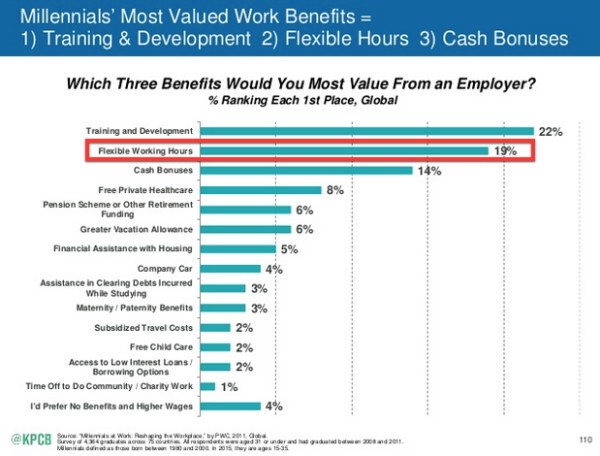Uh oh. What's Plan B?
When a crisis hits, it can leave many leaders in a panic. What do you do when you face any of these situations:
- A major product launch fails
- The year ends way below your sales goals
- A recession hits the economy, freezing many of your customer's budgets
- That next round of capital isn't coming together as planned
- A global pandemic requires everyone quarantine and stomps on the economic brakes
- Supply chain issues slow your growth, or block delivering on your promises to customers
Whether macro or micro factors, issues like these can force tough questions about layoffs and cause a loss of momentum for your team and the company as a whole.
A recession or any similar crisis presents tough challenges for leaders at any level. As you work to save your company or team, these challenges can make it hard to maintain happy teams that are motivated and productive. This makes everything you're trying to do harder.
Challenges can hit your team in a variety of ways:
- Layoffs and reorgs can leave everyone on your team wondering, "Am I next?”
- Morale plummets over the fear of the state of the business, "Will any of us have jobs next month?"
- Wage freezes, barring you from giving raises, even for the most deserving, makes your team think about if the grass is greener elsewhere.
- Hiring and growth stop, so promotion opportunities are all on hold, leaving your ambitious team members hungry.
- Your company can't afford luxuries taken for granted like employee perks and special events that boost morale.
Resentment can develop in employees due to any, or all, of the above, especially if it involves breaking promises made when things were going better.
So, what do you do?
Today, we're going to teach you what to do to maintain a happy team despite the challenges you're facing caused by a crisis.

How to Keep Happy Teams in a Recession: Table of Contents
- Part I: Telling your team and engaging them in solving your biggest problems
- Part II: How to handle layoffs the best way
- Part III: 5 Ways to keep your team happy and motivated, including:
However, before we can talk about the ways to maintain a happy team, we need to tackle an important step that comes first.
If you don't take this step, you can lose control of the situation from the very beginning, and it will be much, much harder to retain your team and keep morale up.
Part I: Open up to your team
This first step is probably the hardest. However, the only way you're going to get through this is by first facing it– with your team.
How? By opening up to them and telling them the truth about what's going on.
Founder and Chief Product Officer Scott Belsky, author of The Messy Middle, wrote about tackling this challenge in his book:
"You must tell the truth without destroying the company. To do this, you must accept that you cannot change it, but you can assign meaning to it.”
Be honest and explain what's happened and how you got here.
Then, tell them what you learned from the experience, how you can prevent it going forward, and share hope going forward.
Your company may have never gone through a recession or crisis like this before and you could find you were wholly unprepared. Then again, it may be a challenge you could have avoided.
Either way, being transparent and open about the situation treats your team like the adults they are, and helps you move forward with trust.

Move forward together.
Once you've opened up and talked about the situation, discuss your ideas for getting back on track and moving forward the best way possible. Then, and most importantly, engage your team by involving them in those solutions; get their ideas to help.
Questions like these can help:
- What could we do as a team to improve in ways that will help us with our current company goals?
- How do you think we could get more of the right things done despite our current situation?
- What's something we're not doing today that we should to better serve our customers?
[Ed Note: Get 18 questions to ask your team in a crisis here.]
By being transparent, showing a plan for the future, and engaging your team in ideas to improve your company, you keep your team motivated. They'll have reason to believe things will turn around and that they can be a part of that. You'll also squash rumors that could otherwise run wild as people speculate on what's going on.
From there, though, you still have to tackle the hardest step...

Part II: How do you get through layoffs?
At the center of every company is their people. It can sound cliche, yet companies often forget this.
Unfortunately, your team is often the lion's share of expenses. For this reason in a recession or crisis, the first place many companies look to cut back is their employees. If drastic changes in budget must be made, it's often necessary and unavoidable.
As much as you may hope to keep all of your team, it's better to let a portion of your staff go than to drive right off a cliff and suddenly have everyone unemployed.
No matter how you do it, layoffs are hard. However, the way you go about executing those layoffs makes all the difference on what happens after for everyone, including those who survive your layoffs.
Cut once, cut deep, then turn the corner and don't look back
When doing layoffs, you want to make sure you only have to cut once.
If you have a second wave of layoffs, you'll scare people into thinking it will never end, which will have all kinds of negative consequences.
Employees will often grow more distant, lose motivation, and begin looking elsewhere without you knowing it.
Instead, chart a strong path forward by telling your remaining team these 3 things:
- Share the pain: Let people know it was hard to do and you understand how hard it is on your team members no longer with us.
- Show how and why you made the decision: Treat your team like adults and as we mentioned above, help them understand how you came to this decision.
- Give them hope: All of this could be really depressing, which is why you need to inspire them with ideas to move forward. Then you can engage them in improving those ideas.
If you're looking for step-by-step help on handling layoffs, we have a detailed post on How to do Layoffs Right, Even if You're Remote here.
When you have this brutally tough day of letting people go and addressing the rest of your team, your work is just beginning.
Now, you need to do everything you can to keep your remaining team members happy and engaged as you fight for survival in the coming weeks and months.
The following tips can help you do that as they work hard for you through this crisis and you ask yourself how to motivate employees during difficult times.
Part III: 5 Ways to Keep Your Team Happy and Motivated in a Recession
Even if the country doesn't have a recession, companies and industries can fall on their own hard times. Fortunately, the same tactics work either way.
Each of the points below applies just as much to situations unique to your company or industry as they do a recession.
Here are five ways to keep your team happy and motivated:

1) Help them grow and add new skills
Just because wages and promotions are put on hold doesn't mean they'll stay that way forever.
One of the best ways you can keep your team happy and engaged is by investing in their skills growth, even when you can't promote them.
This does two things:
- It gives them a sense of progress now, which plays a major role in our happiness (See: the Progress Principle)
- It prepares them so that they're ready for the promotion as soon as the company is in a position to do so later (avoiding the Peter Principle)
Whatever growth opportunity you focus on for each team member, being explicit about it can really help. That way, they fully understand why you chose that project or responsibility for them.

The only limit here is your creativity. Growth can take many forms including:
- Having them lead a project they're passionate about and would be good for their resume.
- Strategically choosing responsibilities that will help them grow...and fill in gaps left by laid-off team members.
- Letting them spend 10-20% of their time on a long shot, high potential reward project.
- Using some of your saved time from having a smaller team to coach each person more.
- And many more...
Best of all, your investment in their growth and development makes them more valuable in the job market.
Even if something does happen down the line and they unfortunately need to be let go, or the company fails, their new skills can help them with their next job.
Show them the value
It's important to make sure that you frame this in a way that makes them buy in. You can't force this on them.
Each of your team members needs to be convinced of the value and want to pursue this growth themselves. Otherwise, you're just giving them more work.
As Dale Carnegie wrote in How to Win Friends and Influence People:
"Arouse in the other person an eager want. He who can do this has the whole world with him. He who cannot walks a lonely way.”
Help them to clearly understand what setting up a career development plan and investing in their growth will do for them. This is an obvious win-win if you frame it that way.
Equally important, listen to what they're interested in to make sure you're on the same page and it's really a fit for what they want. There's nothing worse than thinking you're giving something what they want, and it turns out you misread them entirely.
Whatever you pick together, make it clear this is a two-way street: it will benefit both the company now, and them the next time they're searching for a job. All of this while likely costing you little to nothing financially right now.
Looking for more on growing your employees, check out these posts:
- How to provide employee development when you can't promote them.
- How to talk about your team's career goals and help them achieve them.
- What to do if someone on your team doesn't know what their goals are.
- How to respond to a salary increase request.

2) Use small thoughtful rewards over cash (and other forms of praise)
If you don't have budget for bonuses, raises, or parties, what's a good alternative?
Replace the typical rewards with small, thoughtful gifts for your team.
A small, inexpensive gift with thought put behind it can help build rapport as well as make them feel appreciated.
For example, one simple way you can thank your employees is buying them a book or introducing them to a mentor. It costs you little or nothing financially, and is a big plus for them.
Here are two more real-world examples:
Under $10 (and a few minutes on eBay)
Simple rewards can often be the most meaningful. There are a ton of examples of gifts under $10 that are great ideas for a simple, thoughtful reward that will make your team member feel recognized.
One example is this Mark Price figurine I bought a coworker:

Nate, an engineer I worked with at KISSmetrics, had been doing an amazing job lately and I wanted to show I appreciated the work he'd been doing.
He was a huge fan of retired Cleveland Cavalier Mark Price. So, after a few minutes on eBay and $10, I found something he ended up liking so much that it still sits on his desk to this day:

Think about how easy it was to give something like that. A few minutes of creative thinking and searching had an impact that lasted forever. I'm still friends with Nate to do this day.
The next time you want to recognize an employee, consider taking a few minutes to find something small that they'll enjoy to show your appreciation.
Sweet recognition
Author and former financial executive Mark C Crowley used another similar practice to motivate the top performers in his company.
Each month, Crowley would meet with his people and review their goals from the previous month. Everyone that hit their goal would be recognized at the meeting and rewarded with a bag of candy like the one below:

Crowley would toss the bag at them and recognize them in front of the rest of the team, giving them much-valued public recognition.
Later, as he rose and began to manage other leaders, he'd give those bags of candy out as rewards that those leaders could then share with their teams, making this recognition go even further.
While interviewing Crowley, he summarized his approach:
"If you have 30 people working for you and 25 of them met or exceeded the goal, you have to recognize all 25.
A lot of times we go, ‘Well, it's like the Olympics, we're just going to give gold, silver and bronze.' If you want to destroy the spirit of the other 17 people that met their goals and your expectations, fail to acknowledge them.
People should know that if they meet your expectations and they meet the goals you set for them, that they're going to get acknowledged."
By offering this kind of regular recognition for everyone that hit their goals within the team, Crowley's teams consistently outperformed the other teams in the organization.
You don't have to use candy, though. Any small, simple gesture of appreciation and recognition can have the same effect, whether it's a thoughtful $10 gift based on something they like, or a sweet treat that becomes a symbol of recognition for having hit their goal.
If you're creative, you don't even have to buy anything at all. If you're really not sure what to give, remember that praise is free recognition you can always dish out.

Use praise (it's free)
Praise is a tool you really can't overuse. Yet, sadly, many managers ration it like the last can of beans in a bunker.
There's a reason Mary Kay Ash of the Mary Kay Cosmetics empire, and Sam Walton, founder of Wal-Mart, both speak so highly of praise.
Look for various ways you can positively reinforce the hard work your team is doing. This builds their confidence and let them know you value and see the work they're doing.
Even a simple thank you or "good job on X" email that costs $0 and takes minutes makes a difference for your team members. If you want to get creative, a hand-written note cost you pennies, but it has a powerful effect as it can sit on their desk as a reminder.
Meanwhile, if your employee is remote, a gif can help convey just the right emotion. Like this:

Or this:

Or a quick private message at the end of the week:
Friday work tip:
— Mike Coutermarsh (@mscccc) October 12, 2018
Before the weekend. DM one coworker who impressed you this week. Let them know.
Praise is free, only takes a moment to give out, and lets your people know that you value them and the work that they're doing. That goes a long way toward keeping a happy team that's both motivated and engaged, even in challenging times, so use it often.
Want more ideas on giving praise? Want to learn how to do it the right way?
These posts can help:
- How to give effective praise that motivates
- 5 simple ways to say thank you to your team
- The ultimate guide to praise and positivity at work

3) Find inexpensive perks
Another simple way you can maintain happy teams during hard times is by looking to local businesses.
Everyone is hit in a recession. If you can find a business that your people like, negotiate a discount for everyone. As a result, they'll get more business and you've made a small gesture for your team that they can take advantage of regularly. Every time they do, it will be a reminder of your thoughtfulness.
In Laszlo Bock's book, "Work Rules: Insights from Inside Google That Will Transform How You Live and Lead”, he talks about how many of the perks that Google has implemented for its employees actually cost little or nothing.

How did they manage to do that? As it turns out, these businesses welcome the opportunity to sell to their employees; Google uses its bargaining power to acquire discounts for its employees that then benefit those businesses with more revenue.
You might not have 100,000 employees, but several dozen or hundred employees will often be enough to get a noticeable discount from local businesses interested in getting more business. However, you won't know unless you ask.
With restaurants getting hit particularly hard with Coronavirus shut downs, this can be particularly meaningful. If there's a place many of your team members enjoyed, but have missed for a long time, a small expenditure can bring smiles to your whole team during an otherwise stress-filled day.
4) A Win-Win Change: Offer flexibility
Millennials want flexibility at work.
In fact, according to Mary Meeker's Internet Trends Report, it's the number two most valued work benefit:

In fact, most Millennials don't even see a separation between work and home. Therefore, by giving them that added flexibility, you give them more power to work where and when they're most productive.
This concept is particularly well described by HubSpot CEO Brian Halligan in his 2013 TEDx Talk.
If you offer them to trade a little salary (which you couldn't give them, or may have just had to give them a paycut) for some flexibility, you can create a win-win situation; you could be not only saving your company money, but making them happier and potentially even more productive.
This is especially big for people with families or painfully long commutes. It gives them a way of getting more of that precious time at home if they have a young family, or the flexibility for some outside activity that makes them happy like hiking.
For you and your company, it can then pay you back in a few key ways:
- They'll spend some of that commute time savings working hard for you.
- A happier, more relaxed team member will be both more agreeable during challenging discussions, and more productive as they work.
- A flexible work schedule can often mean more deep work and focus time away from a distracting, open office.
To help make a flexible schedule work for everyone, consider creating a set work from home day, or a no meetings day for everyone. This ensures that anyone using the flexibility isn't missing key meetings.
This is also one of the creative ways I've seen companies handle furloughs; for those trying to avoid layoffs, if you ask your team to take a 20% pay cut, but also give them Fridays off temporarily, it becomes an equitable trade for all sides. What you lose in hours worked may be made up in productivity and morale preservatoin.
What if it's bad timing or a key employee?
"This sounds great,” you might be thinking, "but what if it's a really busy time of year or a key employee that wants some flexibility?”
Do it, even then.
As we talked about above, giving your employees flexibility isn't just going to make them happier. It can make a huge difference to your bottom line and their personal lives.
Here's a story to illustrate why it's worth even letting your key employees have this kind of flexibility.
A life-changing exception to a rule
A friend of mine ran an accounting firm for years. One day, they were recounting to me how one of their top performers asked to take a long vacation in the middle of tax season.
Normally, this would be a hard no. It's the busiest point in the year and they were too important.
However, he knew this was a special situation: the employee's parents were going on a cruise and all their children and grandchildren were coming.
They did not want to miss this.
My friend let them go as long as they promised it would not affect them hitting their deadlines for their clients for tax season. So, they went on vacation, and thanks to hard work both before and after the trip, they still managed to deliver on all their deadlines.
Most telling, though, was something my friend learned years later: The employee's father died 2 months after the cruise.
It was the last time they saw their father, and that chance almost didn't happen.
It meant the world to the employee that they got to be there. They have pictures and memories that will be with them and their children forever.
And what did this do for my friend, their manager? Not only did the employee deliver for all their clients (and thus the company), it led to such loyalty that the employee stayed with the company for nearly two decades.
Would you do this for your team?
If you're thinking about allowing some remote work, keep in mind these pitfalls and tips:
- 11 Essential tips for managing remote employees
- Major pitfalls to avoid when hiring remote employees
- Common mistakes managers make when managing partially remote teams.
- Questions to ask to ensure your team succeeds at working from home

5) Listen carefully in your one on ones
After layoffs, people can feel nervous about their job, asking themselves, "Am I next?" or "Are we going to make it?"
They'll pick up on your stress before you even realize it and look for signals that confirm their greatest concerns. To counteract this, treat your team like adults and talk to them about what's going on in your one on ones to keep them informed.
Let them ask questions and tell them how things are moving forward. The power of progress is as important as a team and company as it is for an individual's work.

Stress at work can create stress at home, so keep them informed to avoid any major surprises. You'll also want to continue to keep them involved in the process of trying to turn things around.
If you've shown loyalty to your people, they'll show loyalty to you. That includes wanting to be a part of the solution and success of your business.
As you work on the turnaround, use your one on ones to engage them on solving problems, and progress on the ones you've already worked on.
You may not be able to share everything, but for their areas of expertise, definitely tap into it.
Toyota knows the value of getting feedback and ideas from everyone. Their "Total Production System" is specifically designed to get feedback from everyone.
This allows good ideas to rise up from anywhere in the company. In many cases, it's easier for those working on the assembly line to recognize inefficiencies, cost-saving opportunities, and ideas for improvement as they do their work. However, without a system to listen to them, senior leaders would never hear them.

Use your one on ones as a vehicle for building trust and loyalty
Your one on ones should be used as a means of maintaining open communication and to address concerns and questions you both have.
Essential to this process is to make sure you keep your promises and progress is made meeting to meeting.
This ensures that every meeting feels different and better than the one before. Turning the corner may be hard, but even a little momentum can snowball.
To create this momentum, ensure you end each 1 on 1 by clearly establishing next steps for both of you.
Then, make sure you keep your promises by next time.
You'll find that when you close the loop in the next meeting, their spirits are a bit higher, and you have new good things to talk about.
The alternative, where nothing changes, is much darker: your 1 on 1s become broken records, your team becomes less and less engaged, and you miss out on their ideas to help turn the corner.
Avoid all that by making sure there's as much action as talk in your 1 on 1s.
Further reading:
- If you're a senior leader, this is a fantastic time to start skip level 1 on 1s. They'll help you keep a pulse on larger team morale and give you more direct contact with people that work on the front lines with customers. Here are some tips for skip level meetings that will come in handy for you.
- The right questions can make all the difference. They can uncover issues you didn't know about, build trust and loyalty, or gain insights on how you improve. Try some of these battle-tested questions here: One on One Meeting Questions Great Managers Ask Their Teams
- Use our one on one meeting template to get the most from your regular one on ones.

Happy Teams are Loyal and Motivated Teams
Keeping a motivated and happy team during a recession or company crisis isn't easy.
It takes courage to lead your team after layoffs. As a leader, you have to be strong for those that depend on you daily, and work with them to turn the corner.
Fortunately, there's a lot you can do as a leader to make the situation better.
Best of all, you don't have to do everything yourself. The odds of success are much higher if you engage your team in the process of making those improvements and moving forward together.
In fact, especially your best people want to help. They will enjoy the chance to be challenged, and value seeing their feedback is being heard and often implemented.
As a result, those same team members will become happier and more motivated, possibly creating even stronger loyalty than you ever had before the crisis.
Further reading
To learn more about how to motivate employees during difficult times, check out these links below:
Happiness and motivation:
- Employee Development: How to grow your employees when you can't promote them
- The Ultimate Workplace Praise Guide: How to be More Positive at Work and Give More Praise to Your Team
- Employee Retention: The Keys to Long, Happy Working Relationships
- How to Motivate Your Team Without Breaking the Bank
- Personal Goals: The Secret to a Happy Team
How to boost low morale or engagement:
- Why People Leave Managers Not Companies (And 5 Things You Can Do About It)
- How Managers Can Cause Low Employee Morale
- How to Keep Your Team Engaged When You Have Low Morale at Work
Managing in a crisis and mental health:
- 5 Things You Didn't Expect When Managing Remote Teams In COVID (And What To Do About It)
- Bereavement at Work: How to Help an Employee When Tragedy Occurs
- 4 Tips On How To Deal With Anxiety At Work In The Long-Term
- Avoiding Employee Burnout: How To Help You & Your Team Thrive In Quarantine

How do you make a happy team?
Having a happy team means investing in the things that motivate them. Luckily, they don't cost you much:
1) Help them grow and add new skills they're interested in
2) Give them specific praise and thoughtful rewards for good work
3) Look for inexpensive, and appreciated perks
4) Have regular 1 on 1s with your team, ask good questions, and really listen to their ideas and input
5) Give your team flexibility for their work whether that's timing, location, or other reasonable accommodations.
How do you keep your team happy and motivated?
One of the best ways to keep your team happy and motivated is to invest in their skills growth. This gives them a sense of progress, which plays a big part in our happiness. Consultancy firm Towers Watson also uncovered that recognition from their manager increases an employee's engagement by nearly 60%, further contributing to employee happiness.
How does a happy leader impact their team?
A happy leader is an engaged leader, which leads to engaged employees who are both more productive and more likely to stay with the company long-term, reducing turnover. In a study by Gallup, they found that, "the manager accounts for at least 70% of the variance in employee engagement.”
What are the benefits of happy employees?
The benefits of happy employees are numerous. They're not only more engaged and productive, data from a 10-year-old study of more than 200,000 employees revealed that employees who are regularly praised by their manager are less likely to quit. In fact, according to the study, "79 percent of employees who quit their jobs cited a lack of appreciation as a key reason for leaving.”
That leads to another benefit: according to a study published in the Society for Human Resource Management, when an employee leaves your company, it costs on average 6-9 months of that former employee's salary to both identify and onboard a replacement.






